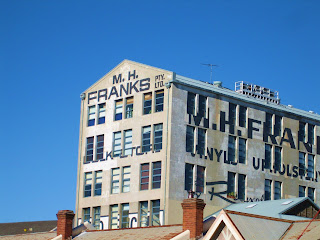 Nowadays wayfinding systems and signage have highly evolved in a way that noone could ever imagine. New technologies were developed and are developing in order to make exterior information much more easier to read and follow.
Nowadays wayfinding systems and signage have highly evolved in a way that noone could ever imagine. New technologies were developed and are developing in order to make exterior information much more easier to read and follow.
Road signage and driving is also affected, in a way that makes drivers’ lives more relaxed. But we have not reached not even the middle of the barrel called innovation yet.
Why not have computer-driven cars where we tell the computer where we want to go to, let it work out the best combination of roads and drive us there in a proper manner while we can do other things? The technology for computers to control cars exists. The trouble is that road signage is designed for people not computers. Computers can remember better than people, can respond to communications more consistently and do not have feelings, but computers cannot see or hear like people. Sensors in automobiles can detect if there is anything behind a reversing car, or if the braking lights on a vehicle ahead go on, but as yet computers cannot read road signs and street names or understand what to do and where to go. The complexities of down town traffic are far beyond any existing computer-based systems of driving.
 However, what computers can do is respond to radio signals that are not affected by wheather. If the computer-driven cars is a good scenario for the near future then a new kind of signage system that computers can read should and has to be developed.
However, what computers can do is respond to radio signals that are not affected by wheather. If the computer-driven cars is a good scenario for the near future then a new kind of signage system that computers can read should and has to be developed.
Such a system could communicate messages with a correct use of screen projection with information about the road that the driver is crossing might be very helpful for him/her and for the passengers too. Several infos, such as weather conditions, speed limit, dangerous turns and even traffic condition ahead would make the next generation of drivers very careful and aware just because will help them to focus on the road with distracting their attention. It could also transmit individual messages to the car’s occupants giving them the ability to touch the screen and manipulate informations, like maps and navigate in a 3D virtual enviroment.
Variable message signs (VMS), were developed, quite innovative, according to the needs of the driver. They are often placed along big motorways and ring roads in order to indicate speed limits as well as road conditions ahead. The driver still looks through the car window to read these signs. They are not linked into displays on the screen within the vehicle. They can be obscured by other vehicles, or misunderstood in foggy conditions.
Everything leads in a dual system, like that in aviation. Such a dual system could help a computer-driven car and it’s occupants to decode the signs of the road with signals that let the car know what road to follow, what is the speed limit in this particular area and also does not leave the driver and the other people in the car uninvolved. It is a helpful suggestion that does not replace the road signage just because, even if an intelligent system could be totally responsible for the driving, the human factor will always play the most important role in the transportations.
However, there are many factors that can affect the future of road signage and the way that it is going to evovle.
First of all, even though, we are not far from a dual system like the one mentioned before, the trends that are going to exist in that particular moments in the future are quite difficult to define. The use of an existing typeface in a virtual enviroment like the Head Up Display is, probably, not going to take place. Inevitably new fonts will be developed having better results and behavior on a vehicle’s screen. Legibility is the most important factor in the relationship between the vehicle’s occupants and the vehicle’s screen. The informations should and have to be clear in order to be read without distructing the driver’s attention.
It is also important to think of the weather conditions that may occur during a trip. In the middle of a rainy situation the screen will react depending on the intensity of the rain. Words and numenrs are going to have bigger size and be brighter in order to stand out.
In terms of colour, should always be adjusted itself according to the eather conditions and the light that exists





